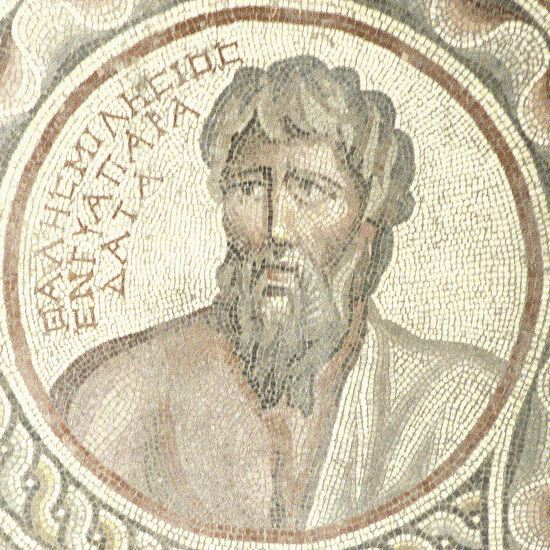- About MAA
- Membership
- MAA Publications
- Periodicals
- Blogs
- MAA Book Series
- MAA Press (an imprint of the AMS)
- MAA Notes
- MAA Reviews
- Mathematical Communication
- Information for Libraries
- Author Resources
- Advertise with MAA
- Meetings
- Competitions
- Programs
- Communities
- MAA Sections
- SIGMAA
- MAA Connect
- Students
- MAA Awards
- Awards Booklets
- Writing Awards
- Teaching Awards
- Service Awards
- Research Awards
- Lecture Awards
- Putnam Competition Individual and Team Winners
- D. E. Shaw Group AMC 8 Awards & Certificates
- Maryam Mirzakhani AMC 10 A Awards & Certificates
- Two Sigma AMC 10 B Awards & Certificates
- Jane Street AMC 12 A Awards & Certificates
- Akamai AMC 12 B Awards & Certificates
- High School Teachers
- News
You are here
Some Original Sources for Modern Tales of Thales - A Brief Note on Images of Thales
While there exist today many different artists' depictions of Thales, it should be noted that no surviving source from antiquity provides any physical description of Thales. If any artwork of Thales was made during his lifetime, it hasn’t survived (and, even if such artwork did exist, it wouldn’t provide an accurate likeness of Thales anyway, since the beginning of the development of faithful, accurate likenesses in Greek art and sculpture took place years later).
For the period that includes the sources discussed in this article (roughly before 600 CE), there are only two surviving works of art that are clearly labeled as being depictions of Thales. One is a wall painting (see Figure 1 below). The painting was made during the first half of the second century CE, and is located in the Baths of the Seven Sages in the Roman river port Ostia.

Figure 1: “Ostia, Baths of the Seven Sages (II),” photographed by George Houston, is licensed under CC BY 2.0
The other artwork is part of a mosaic that decorated the floor of the dining room of a Roman villa constructed in the second century CE near Baalbek, in present-day Lebanon. The mosaic shows the muse Calliope, Socrates and the Seven Wise Men of ancient Greece, including Thales (see Figure 2 below).

Figure 2: "Thales. Roman mosaic from Suweydie near Baalbek," photographed by Marco Prins, is licensed under CC BY-NC-SA 4.0
No existing Roman or Greek sculpture can be identified with any certainty as being an intended depiction of Thales. The only piece of sculpture inscribed with Thales’ name now resides in the Vatican museum: a partial herm (a squared pillar, often with inscriptions, topped by a sculptured head), which was found near the Porta Maggiore in Rome; unfortunately, the top portion including the head was never recovered.
Michael Molinsky (University of Maine at Farmington), "Some Original Sources for Modern Tales of Thales - A Brief Note on Images of Thales," Convergence (November 2015)




